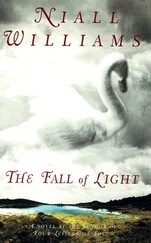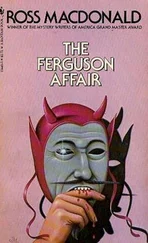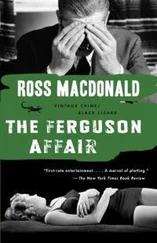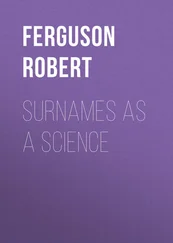Yet in one crucial respect the Jewish community of Fürth was divided: between a Reform or liberal minority and an Orthodox majority. Proponents of Reform, like Isaak Loewi, who became chief rabbi in 1831, wished (among other things) that Jewish worship should conform more to the style of Christian worship. Under his influence, the main synagogue was given a more churchlike layout, with standing desks replaced by pews and the addition of an organ in 1873; worshippers no longer wore the tallit . 33These changes were part of a wave of assimilation among German Jews, who sought to efface the outward differences between themselves and German Christians in the hope of thereby achieving full equality before the law. A few Jews went even further, either converting to Christianity or embracing the radical skepticism of the political left. But the majority of Fürth Jews reacted against the Reform movement. Thus, while the liberal congregation controlled the main synagogue, the other smaller synagogues around the Schulhof were the domain of Orthodoxy. The division extended into the realm of education. The children of Reform Jews attended the public Gymnasium or the Girls’ Lyceum, along with their gentile contemporaries, while the children of Orthodox families were sent to the Jewish High School ( Realschule ) at 31 Blumenstrasse, where there were no Saturday lessons. 34
To an extent that is often forgotten, Jewish assimilation succeeded in pre-1914 Germany. Formally, to be sure, there remained restrictions. The Bavarian Judenedikt of 1813 had granted Jews Bavarian citizenship but had set a limit on their numbers in any one place — which explains the stagnation of the Fürth community in the mid-nineteenth century and its absolute decline after 1880. That statute remained in force until 1920, despite a brief period of relaxation after the 1848 Revolutions. 35Yet in practice the Jews of Fürth had ceased to be second-class citizens by 1900 at the latest. Not only could they vote in local, state, and national elections; they could also serve as magistrates. They played leading roles in the local legal, medical, and teaching professions. As one Fürth Jew recalled, his hometown produced “the first Jewish attorney, the first Jewish deputy to the Bavarian diet, the first Jewish judge in Bavaria, the first Jewish headmaster.” 36Among the distinguished products of the community were the publisher Leopold Ullstein, born in Fürth in 1826, who by the time of his death in 1899 was one of Germany’s leading newspaper proprietors. In 1906 another luminary, the pencil manufacturer Heinrich Berolzheimer, bequeathed to the town the Berolzheimerianum as a “home for popular education” to “serve the whole population… regardless of social class, religion or political opinions.” This building, with its large public library and auditorium, symbolized the apogee of South German — Jewish integration.
Yet there was always a seed of doubt. The author Jakob Wassermann was born in Fürth in 1873, the son of an unsuccessful businessman. Looking back on his unhappy childhood in a memoir published in 1921, Wassermann recalled how the mid-nineteenth-century restrictions “like those on numbers, on freedom of movement and on occupation… [had] provided constant nourishment for sinister religious fanaticism, for ghetto obstinacy and ghetto fear.” 37Admittedly, those restrictions had ceased to operate by the time of his youth, so much so that his father would exclaim contentedly, “We live in an age of tolerance!”
As far as clothing, language and mode of life were concerned, adaptation was complete. I attended a public government school. We lived among Christians, associated with Christians. The progressive Jews, of whom my father was one, felt that the Jewish community existed only in the sense of religious worship and tradition. Religious worship, fleeing the seductive power of modern life, became concentrated more and more in secret, unworldly groups of zealots. Tradition became a legend, and finally degenerated into mere phrases, an empty shell. 38
Wassermann’s recollections need to be read with caution. He was doubly an outsider, an autodidact atheist who despised his father’s mechanical observance, and a lover of German literature who felt the tiniest hint of racial prejudice as a personal affront. Yet his account of the religious and social life of the Fürth Jews is unmatched and illuminating. “Religion was a study,” he recalled “and not a pleasant one. A lesson taught soullessly by a soulless old man. Even today I sometimes see his evil, conceited old face in my dreams…. [He] thrashed formulas into us, antiquated Hebrew prayers that we translated mechanically, without any actual knowledge of the language; what he taught was paltry, dead, mummified.”
Religious services were even worse. A purely business-like affair, an unsanctified assembly, the noisy performance of ceremonies become habitual, devoid of symbolism, mere drill…. The conservative and orthodox Jews conducted their services in the so-called shuls, tiny places of worship, often only little rooms in obscure, out-of-the-way alleys. There one could still see heads and figures such as Rembrandt drew, fanatic faces, ascetic eyes burning with the memory of unforgotten persecutions. 39
When the young Wassermann expressed interest in the works of Spinoza, he was warned, “in a tone of sibylline gloom, that whoever read these books must become insane.” 40
Wassermann rightly saw through the facade of assimilation. One night the family’s Christian housemaid took him in her arms and said, “You could be a good Christian, you have a Christian heart.” Her words frightened the boy “because they contained a tacit condemnation of being Jewish.” 41He sensed the same ambivalence in the families of his gentile playmates: “In childhood my brothers and sisters and I were so closely bound up with the daily life of our Christian neighbors of the working and middle classes that we had our playmates there, our protectors…. But watchfulness and a feeling of strangeness persisted. I was only a guest.” 42
To live as a Jew in Fürth was to grow accustomed to things Wassermann found intolerable: “A sneering appellation in the street, a venomous glance, a scornfully appraising look, a certain recurrent contempt — all this was the usual thing.” 43What was worse was to discover that such attitudes were not peculiar to Fürth. As a conscript in the Bavarian army, Wassermann also encountered
that dull, rigid, almost mute hatred that has penetrated the national organism. The word anti-Semitism does not serve to describe it…. It contains elements of superstition and voluntary delusion, of fanatic terror and priest-inspired callousness, of ignorance and rancor of him who is wronged and betrayed, of unscrupulousness and falsehood as well as of an excusable weapon of self-defense, of apish malice as well as of religious bigotry. Greed and curiosity are involved here, blood-thirstiness and the fear of being lured or seduced, love of mystery and scanty self-esteem. In its constituents and background it is a peculiarly German phenomenon. It is a German hatred. 44
Wassermann was once asked by a foreigner, “What is the reason for the German hatred of the Jews?… What do the Germans want?” His reply was striking.
I should have answered: Hate….
I should have answered: They want a scapegoat….
But what I did say was: A non-German cannot possibly imagine the heartbreaking position of the German Jew. German Jew — you must place full emphasis on both words. You must understand them as the final product of a lengthy evolutionary process. His twofold love and his struggle on two fronts drive him close to the brink of despair. The German and the Jew: I once dreamt an allegorical dream…. I placed the surfaces of two mirrors together; and I felt as if the human images contained and preserved in the two mirrors would have to fight one another tooth and nail. 45
Читать дальше











